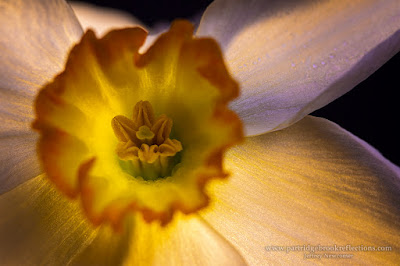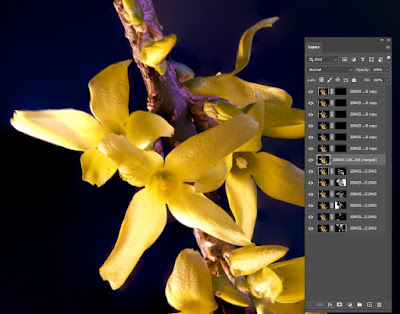 I
hope everyone is doing well and using your photographic explorations to help
manage your way through the maddening pandemic isolation. Our exuberant New England spring has displayed
a widely varied supply of color and new growth. The inspiration seems
endless, from bursting new buds to spreading young leaves, in a riotous array
of shades of green. For me, all I have to do is grab my camera and head,
socially distant, out of the door, and that has been my sad problem.
I
hope everyone is doing well and using your photographic explorations to help
manage your way through the maddening pandemic isolation. Our exuberant New England spring has displayed
a widely varied supply of color and new growth. The inspiration seems
endless, from bursting new buds to spreading young leaves, in a riotous array
of shades of green. For me, all I have to do is grab my camera and head,
socially distant, out of the door, and that has been my sad problem. Over
this last, gloriously perfect, week of the spring, I have been completely
crippled by a severe pre-patellar bursitis and cellulitis. The result has been
that, while the spring colors have evolved, I have been hobbled with a walker
and limited from bed to chair. I thought
my Covid isolation was a problem enough, but at least I could get out for nice
long walks and drives, but now I have been limited to gazing longingly out my window
or up into the trees from my porch.
Over
this last, gloriously perfect, week of the spring, I have been completely
crippled by a severe pre-patellar bursitis and cellulitis. The result has been
that, while the spring colors have evolved, I have been hobbled with a walker
and limited from bed to chair. I thought
my Covid isolation was a problem enough, but at least I could get out for nice
long walks and drives, but now I have been limited to gazing longingly out my window
or up into the trees from my porch.  |
| Westmoreland New Hampshire on my last drive before the lay-up |
 |
| I was able to limp to my Orchard across the street |

 |
| Seven Layer Focus Stack |
Lessons Learned
I
have largely finished my in-studio macro photography and as I have been packing
away my improvised gear, I wanted to
share a couple of tips that I have learned through my usual technique of “painful
trial and error”.
Holding Tight
 First,
I have experimented with various ways to securely attach my subjects in the
studio. For the sturdy, woody branches, one of my old surgical clamps
worked well, but these devices proved too sharp and tight for the delicate
ferns. They cut right through, and the greens quickly flopped. On one occasion, I was struggling to maintain
focus and then realized that the plant was slowly bending under the
pressure. I found that the
solution was to tape the stems to a piece of mat board which could then be
securely attached to the clamp.
First,
I have experimented with various ways to securely attach my subjects in the
studio. For the sturdy, woody branches, one of my old surgical clamps
worked well, but these devices proved too sharp and tight for the delicate
ferns. They cut right through, and the greens quickly flopped. On one occasion, I was struggling to maintain
focus and then realized that the plant was slowly bending under the
pressure. I found that the
solution was to tape the stems to a piece of mat board which could then be
securely attached to the clamp. 
Manual Exposure
 |
| Even on Manual a few flares come through |
Finally,
as my subjects became more mature, and thicker, trans illumination became less
effective. Increasingly I relied on my large studio box to light the
subject from the front, adjusting the angle to provide nice contrast. I still used back-lighting, but in these
cases, I adjusted the intensity to provide a nice bit of rim lighting to
highlight the edges.
 |
| Spring is rainy season and I love droplet lenses |
Ok, this is the last time I will say this. Get out and enjoy the spring colors. I have seen some nice work on Facebook from many of my friends, but if you are still hiding in your house, you are missing out AND it is NOT my fault!
Check out my growing
Spring 2020 Gallery




















